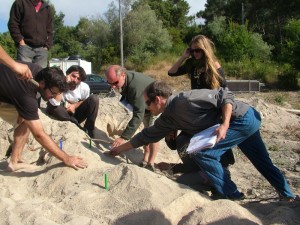” The forest is a peculiar organism of unlimited kindness an benevolence that makes no demands for its sustenance and extends generously the products of its life and activity; it offers protection to all beings”
- Buddhist Sutra
We started the day speaking about THE SUBJECT of Permaculture: PATTERNS. These are repeated shapes or forms that configure landscape. Our tasks as Permaculturalists to implant restorative patterns on degraded landscapes. The pattern IS the design, and design is the subject of permaculture.
In nature we can find different types of patterns:
- Branching/dendritic: trees, rivers. Function is distribution up/down.
- Circle: amongst the different shapes, for a same area the circle has the smallest edge, conserves energy, get more sun
- Spirals: water, seeds, trees, ferns, storms.
- Luneate: dunes (4 orders). In the wind-protected side, accumulation of nutrients.
- Tessellation. Allows structures to move while are growing
After that we began to speak about our beloved friends: Plants. We split in groups and took a walk around the site and searched for five different plantspecies and then we tried to identify the patterns in them and also their function in the ecosystem.

Then we moved on to discuss the limiting factors on plant growth, the ethics of Permaculture concerning local varieties and different ways of propagation and reproduction.
After lunch we talked about trees and forest and the many factors that a forest can perform. Forests are complex systems that can buffer climate and have huge effects in the area around them. Forest area has been declining all over the world during the last years, and this loss is exacerbating the effects of climate change and supposes a severe threat for future generations. After this discussion we all just wanted to go out in to the world and start to plant trees all over the place. If you want to feel inspired too, watch “The Man who planted trees”
Then we discuss how to use trees to affect microclimates. One of the most common uses is to plant trees as windbreaks. Windbreaks can serve as suntraps, increase of decrease wind velocity, decrease evaporation up to 70%, control erosion and act as dust filters and nutrient traps.
To change the subject and activate our bodies and minds we went outside into a heap of sand to discuss the exercise that we did some days ago about key lines and key points using the sand as a 3-D model of the contours plan for us to experiment. While we where there, Rosemary also shared some advice on dam building.

